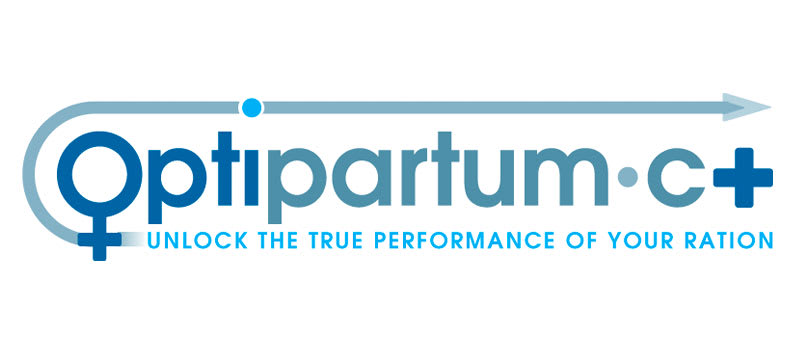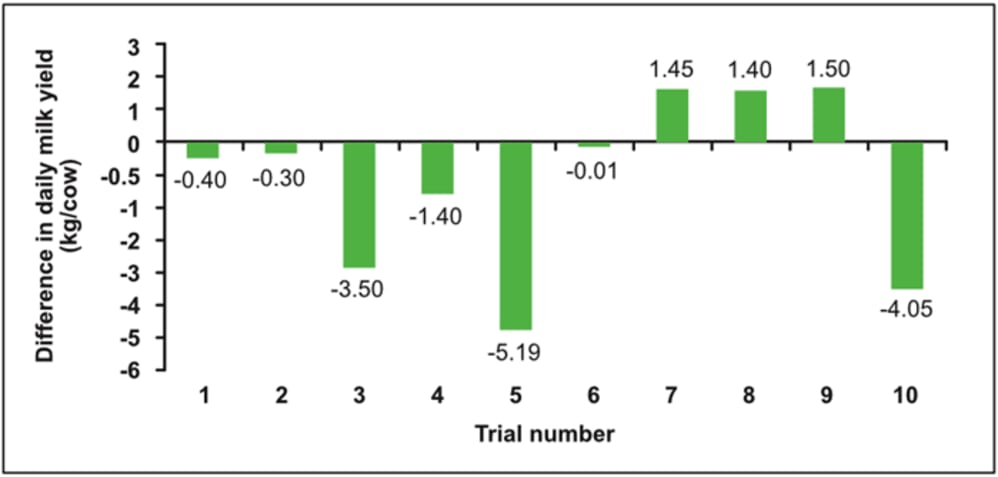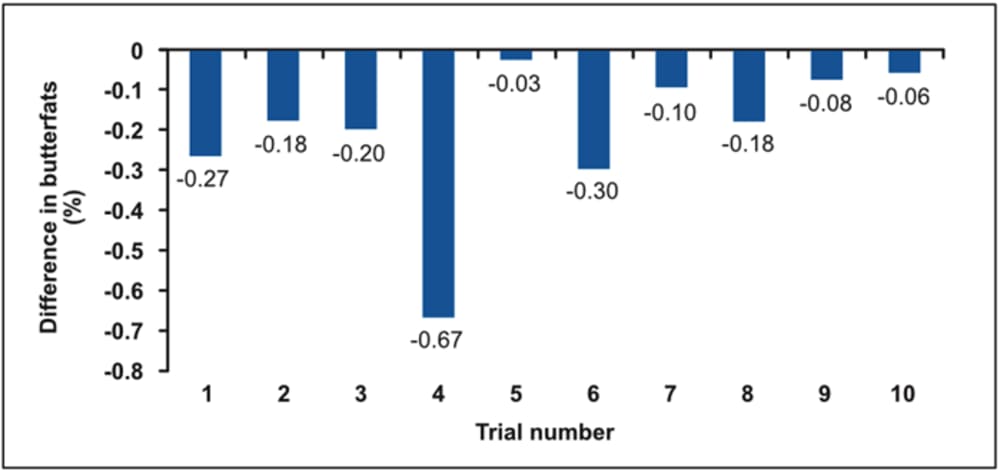Transition ration myths putting lactation performance under threat
Published Thursday, 13th September 2018
It’s well recognised that improved feeding through the transition period can have a dramatic impact on cow health and lactation performance. And according to Dr Derek McIlmoyle, AB Vista’s EMEA technical director, the forage shortage being faced by most herds this winter provides an ideal opportunity to rethink transition rations.
“The challenge is that over the years a number of myths have grown up around what’s needed – or not needed – in a transition ration, some of which can significantly reduce cow performance,” he highlights.
“Straw, for example, has become the mainstay for bulking out transitions rations to limit energy intake and help control post-claving fat metabolism and metabolic disorders. But there’s evidence that this may also be reducing milk yields.”
Inconsistent yield response
A single, high-straw transition ration fed for the entire dry period doesn’t just simplify feeding. It’s also been shown to lower blood non-esterified fatty acid (NEFA) and β-hydroxybutyrate (BHBA) levels post-calving, as well as reduce fat build-up in the liver and cut the incidence of displaced abomasums.
“The problem is that both NEFA and BHBA are important sources of energy and milk fat precursors for the mammary gland, and overly restricting supply can adversely affect milk production,” Dr McIlmoyle explains.
“In ten comparisons between controlled-energy and excess-energy feeding during the transition period, milk yield results were inconsistent, with a few showing substantial losses when energy intake was restricted (Figure 1). Milk fat production was reduced in every trial (Figure 2).”
Figure 1 - Differences in milk yield across ten trials comparing controlling energy intake (approx. 80-100% req.) versus over-feeding energy (approx. 140% req.)
Figure 2 – Differences in butterfats across ten trials comparing controlling energy intake (approx. 80-100% req.) versus over-feeding energy (approx. 140% req.)
Low energy supply
Possible reasons for the poor performance include differences in energy content between the feeds fed on-farm and the estimates used to formulate rations. This can produce an energy supply lower than intended, highlighting the need to analyse all feeds, and particularly forages. In addition, less fat mobilisation post-calving could potentially limit the availability of NEFA and BHBA.
“High levels of NEFA and BHBA in the blood aren’t necessarily a problem if cows are milking well,” continues Dr McIlmoyle. “What’s more critical is to track any trends in the levels, which may indicate changes within the cow that have gone unnoticed.
“A shift towards higher blood BHBA levels, for example, may be symptomatic of a reduction in forage quality, a higher stocking density or increased internal body fat mobilisation.”
What’s needed, according to Dr McIlmoyle, is a more holistic approach to transition management, with energy intake just one of many factors considered. Often, issues relating to fat metabolism and negative energy balance in early lactation are more effectively tackled by addressing choline supply, he claims.
Supporting liver function
“When body reserves are mobilised in early lactation, it’s the liver that processes the fat. Without an adequate supply of choline, that fat can’t be converted into an energy form suitable for transport to the mammary gland.”
Even mild shortfalls will limit energy supply, with knock-on effects for milk production and fertility. In more serious cases, the resulting build-up of fat in the liver – fatty liver syndrome can affect 50-60% of dairy cows around calving – will restrict liver function even further.
“Another myth is that choline should only be fed when cows are overfat, yet choline requirements exceed synthesis in all cows during early lactation,” Dr McIlmoyle continues. “And since choline is broken down in the rumen, that means some form of rumen-protected or precision-release choline supplement, such as ReaShure.
“There’s also a belief that because controlled-energy transition rations reduce post-calving fat mobilisation, there’s no need for extra choline. But research at the University of Florida has shown that isn’t the case, with a 2.2 kg milk/day response to the addition of choline recorded during the first 15 weeks of lactation that lasted for the whole lactation.”
Independent trial results
The trial used 93 Holstein cows fed either a controlled-energy or excess energy transition ration. Half the cows in each group also received 15 g/cow/day of precision-release choline supplement for three weeks pre- and three weeks post-calving. Regardless of diet energy level, the result was an increase in milk yield throughout the lactation (Figure 3) despite no increase in dry matter intake or additional body condition loss. Milk fat and protein percentages were unchanged.
Figure 3 - Effect of ReaShure precision-release choline on lactation yield (Source: Univ. of Florida)
“It’s still important to ensure cows aren’t overfat at calving, so aim for a BCS of around 3.5. But the evidence suggests rumen protected choline will have substantial benefits in all situations, whether low energy, bulky diets are fed or a more traditional steaming up ration is used in the last 2-3 weeks pre-calving,” Dr McIlmoyle adds.
Other factors to consider include checking potassium (K) levels in any forage to make sure they’re low enough to avoid the risk of subclinical milk fever. Correct mineral and vitamin supplementation is also important, especially in the last half of the dry period, with the levels on vitamin E and the form of copper and selenium particularly important.
Optimising the rumen
“In addition, many of the top herds have now extended their use of a live yeast like Vistacell to include the dry cows, improving rumen conditions and easing the transition onto the milking ration. The rumen needs to be working as efficiently as possible, both in the lead up to calving and through early lactation, so it’s worth considering including Acid Buf rumen conditioner as well to help stabilise rumen pH.
“Just remember that managing cows through transition is about much more than just feeding,” Dr McIlmoyle concludes. “How cows are housed, handled and introduced into the milking herd can have a huge impact on subsequent performance through the lactation.
“Get it right, though, and the improved efficiency, additional milk, reduced health problems and better fertility will more than pay back the extra time, effort and cost involved.”
Latest news
Stay ahead with the latest news, ideas and events.

Online Feed Fibre Calculator
Calculate the percentage of dietary fibre in your feed
Our calculator is designed for nutritionists and uses averages of global raw materials to calculate the dietary fibre content (plus other more in-depth fibre parameters) of finished animal feed. These parameters are available within AB Vista’s Dietary Fibre analysis service (part of our NIR service).
Sign up for AB Vista news
A regular summary of our key stories sent straight to your inbox.
SUBSCRIBE© AB Vista. All rights reserved 2025
Website T&Cs Privacy & Cookie Policy Terms & Conditions of Sale University IDC policy Speak Up Policy




























